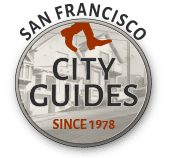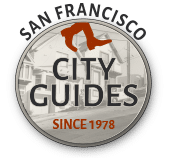San Francisco Tour Tales
Food Corner – Cappuccino
It’s no surprise that the first espresso machines in San Francisco were brought over from Italy to North Beach. Less well known is that those first machines have never been used to make coffee.
Today’s North Beach institution, Tosca Café, was opened on 19 November 1919 by three Italians returning from World War I who wanted a bar like those they had frequented in Italy. Alas, less than two months later, on 16 January 1920, Prohibition went into effect throughout the United States. How could Tosca fill its customers’ orders?
One of the three partners was dispatched to Healdsburg to make brandy. Espresso machines were imported from Italy – the first in 1921 and a second in 1927. Soon they were up and running steaming milk for Tosca’s two famous “coffee” drinks: their House Cappuccino consisting of chocolate, steamed milk, and brandy, and their White Nun with steamed milk, brandy, and kahlua. (Carol Doda, San Francisco’s celebrated topless dancer, used to sit – fully clothed – in the front window of Tosca sipping White Nuns during her breaks from dancing at the nearby Condor Club.)
To this day, both venerable espresso machines can still be seen perched on Tosca’s bar where they are used to make House Cappuccino and White Nuns. And to this day, neither has produced a drop of coffee.
So where in San Francisco did traditional cappuccino – the kind with coffee – first appear? It is said that honor goes to Café Trieste, still owned and operated by the Giotta family that opened this North Beach hangout in 1956, just in time to fuel the caffeine habits of the beatniks who congregated in North Beach in the 1950s.







